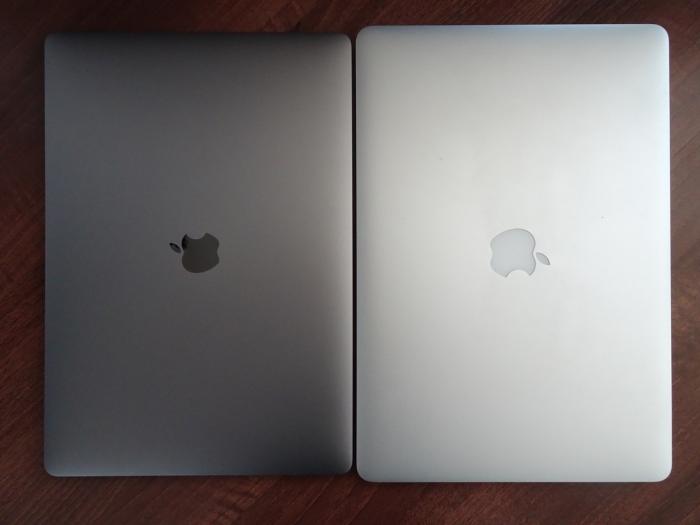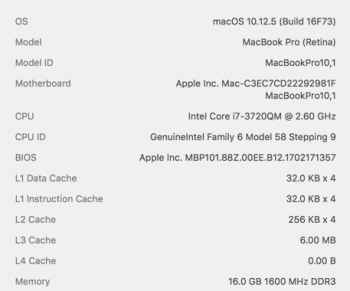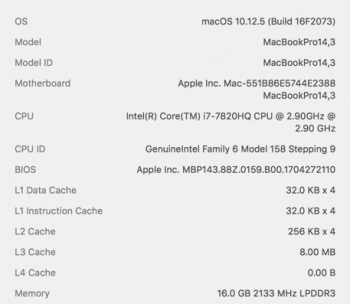To compare the two models, I ran benchmarks using Geekbench 4. Since I used the 2012 model for development and will be using the 2017 model for the same purpose I also compared how they go in terms of time to build my projects, and how quickly my commonly used applications start.
These are the CPU specifications for both models. Both have an Intel i7 processor, but of course the 2017 model has the newer Kaby Lake version and runs at a slightly higher speed. This processor also has more L3 cache.
The results speak for themselves. The 2017 model is faster! It's about a 26% boost in performance in both the single core and multi core benchmarks. Full details of these results are available here: 2012 model and 2017 model.
In terms of graphics, both the Intel graphics and the discrete GPUs have been upgraded to much faster models. I didn't bother to test how the new Intel 630 compares to the older Intel 4000 HD graphics. I did compare the new Radeon Pro 560 performance to that of the older NVIDIA GeForce GT 650M however.
The 2017 model has a 227% improvement over the 2012 model in terms of hardware accelerated graphics performance. That is just amazing! Full results are available here: 2012 model and 2017 model.
Benchmarks are all well and good, but what I was more interested in was if the 2017 model would have a visible improvement in terms of my day to day work. For this I ran the build for one of my largest projects using Maven. The results were clear - 33s to build on the 2012 model vs 24s on the 2017 model - almost 10 seconds shaved off the time to build! That doesn't seem like a huge amount but when you consider how often a build is done per day, it quickly adds up. By the end of a working week I would be saving hours of time using the 2017 MacBook Pro.


I've also timed how quickly some of my commonly used application start up and this is what I saw:
IntelliJ - 15s (2012) vs 12s (2017)
Eclipse - 15s (2012) vs 11s (2017)
Postman - 9s (2012) vs 7s (2017)
It was a consistent improvement in application start time. This would not impact productivity as much though since I typically leave applications running when not in use.
I also measured how long it took for each Mac to start up from cold off to the login screen. The 2012 model took 20s while the 2017 model took 13s. That's a great improvement too, though the frequency of restarts is far and few between.
So its not just the benchmarks that show how much better the 2017 model is. That is to be expected however, 5 years is a long time and any new model should be faster than anything that came before it.
-i









